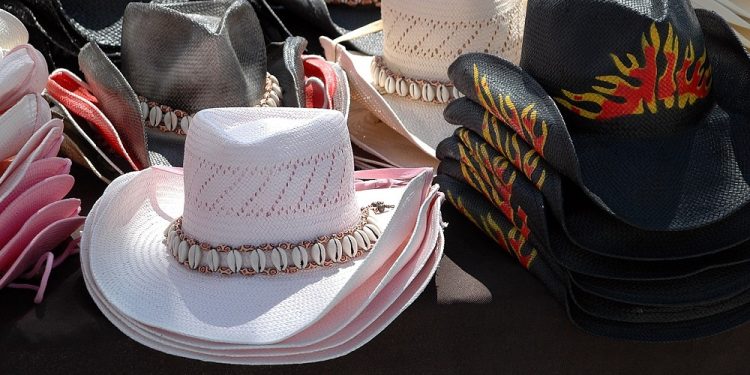
National Hat Day
National Hat Day is an unofficial holiday which falls annually on January 15th. It celebrates one of the oldest human accessories. Hats have been worn throughout history for a variety of different purposes: to indicate social status or branch of military service, to show the wearer has a position of authority, for religious purposes or to denote nationality, for ceremonial or fashion purposes, or to protect the wearer from the sun, rain, or other hazards. It’s such an important article of clothing that millions of people all over the world celebrate this day by dusting off their favorite hat and wearing it proudly in public. Will you be among them?
The History of the Hat
While scholars don’t exactly know when the hat was created, it is believed to go back thousands of years. One of the earliest depictions of a hat is a painting found in a Thebes tomb that was painted over 5,200 years ago. This painting shows a man wearing what appears to be a straw hat.
Scholars also know that hats were extensively worn in ancient Greece and Rome. In fact, in these cultures, when a slave was freed, they were often given a Phrygian cap that served as a symbol of their freedom. This practice was so common that these caps became known as “Liberty Caps,” a name that would stick with them while they were being worn during the French Revolution.
Over the years, men and women wore a variety of head accessories—everything from hoods, caps, and wimples to veils, brimmed hats, and fur moccasins. During the 18th century, milliners started appearing all over the world, and they crafted a variety of different hats and bonnets.
During this century, hats became a symbol of wealth, especially among women. One of the hats that denoted wealth was the bergère or Shepherdess Hat. This was a wide-brimmed hat made of straw and was used to protect the delicate skin of fair ladies. However, no style trend remains around forever, so this hat ended up fading into history.
It may be gone, but it’s certainly not forgotten because it has since become a symbol of Romanticism. Another symbol of Romanticism is the black silk top hat that was popular during this time. At the beginning of the Victorian Period, it was quite large indeed, but as the period wore on, they became smaller and more conservative.
While they eventually disappeared from day-to-day use, they are still resurrected once in a while for special events such as weddings or fundraising balls. During the 19th century, the English bonnet became extremely popular. While it was originally used by milkmaids, it soon became the Bonnet du Jour for many women—regardless of their social status or class.
It became so popular during this time because it framed a woman’s face quite well but protected her profile from libidinous men. If you look at period works during this time, especially the works of Jane Austen, you’ll see just how popular they really were. More elaborate hats became popular during the Edwardian Period.
These hats were oversized and were usually stacked with bows, lace, flowers, plumes of feathers, or sometimes even stuffed birds. These Gainsborough Hats would eventually stir a backlash against them as many people began to worry about the welfare of the birds that were used in making the hats.
This resulted in laws being passed to protect birds from the hat industry, and many milliners began to use more ribbon and tulle in their creations instead of feathers and stuffed birds. Hats that did contain feathers used ostrich feathers that were collected after they had fallen off the bird. Unfortunately, the damage had already been done to the passenger pigeon, and it had already become extinct.
Of course, the extinction of the passenger pigeon wasn’t due entirely to milliners of the time. Farmers protecting their crops and hunters also contributed to their extinction. At the end of this period, hats such as the Merry Widow Hat began to disappear, and one of the main things that finally contributed to its demise was the cinema.
In 1921, the silent film “The Three Musketeers” was released and introduced women of the time to bicorn-shaped and tricorn-shaped hats. These hats were still large but weren’t as large and gaudy as their predecessors. During the 1920s, wide-brimmed sun hats began to replace the hats of yesteryear. Other hats worn by women during this period include Tam O’Shanter hats, turbans, bobbed hats, and the most iconic hat of the decade—the Cloche hat.
Men’s hats of the 20th century include the Trilby, Fedoras, and the reemergence of Bowler Hats. While Bowler Hats were originally created in 1849, they made a somewhat brief appearance among London businessmen during the 1950s and 1960s. However, this trend ended up dying out by the 1970s.
During the 2010s, it became popular to wear “classic hats” from the past. Some of the classic hats that became popular again include the Fedora, the Trilby, the Pork-Pie Hat, the Bowler, the Western, and the Panama. Some people have even started wearing Top Hats during formal or semi-formal events.
The History of National Hat Day
Unfortunately, the history of National Hat Day isn’t so detailed. No one knows exactly when this holiday started or who started it. It seems that National Hat Day is a mystery that’s yet to be solved.
Fun Facts About Hats
- The Fedora was originally a woman’s hat.
- Hatters traditionally made male hats.
- Milliners traditionally made female hats.
- The Trilby was named after the fictional heroine Trilby O’Ferrall from “Trilby” by George du Maurier.
- Vikings never wore helmets with horns on them.
- No U.S. President has donned a Top Hat for his inauguration since Nixon.
Celebrating National Hat Day
National Hat Day can be easily celebrated by just choosing one of your favorite hats and wearing it. You have a variety of hats available to you, both classic and modern. Just choose one that suits your style and enjoy this unofficial holiday.








